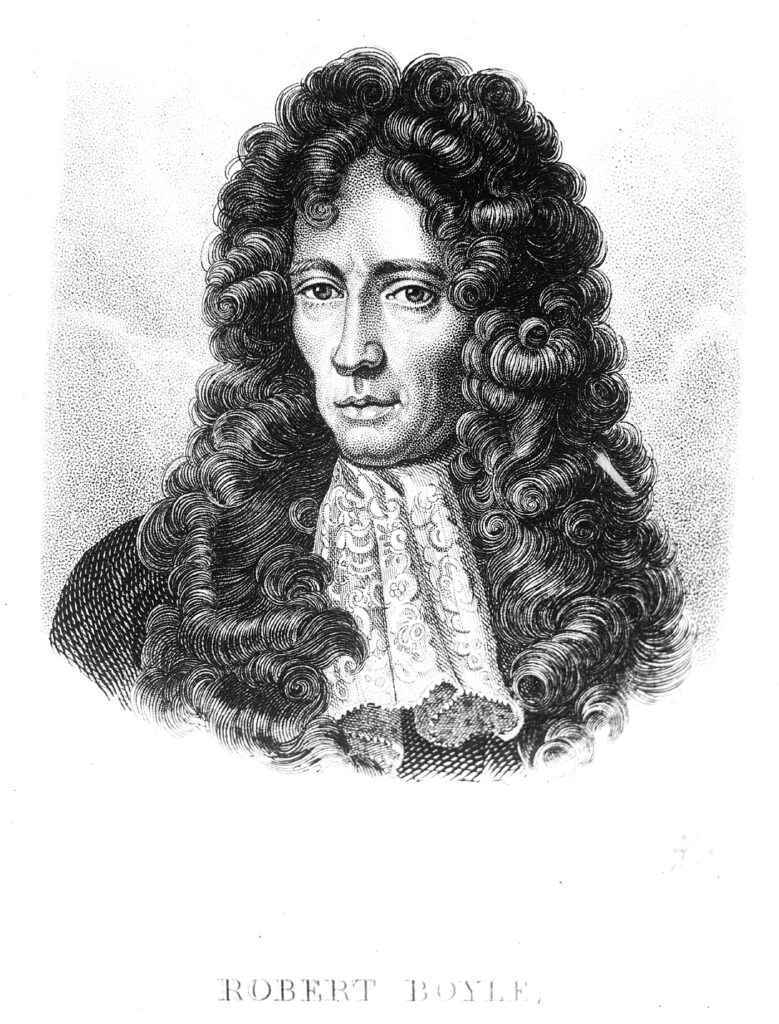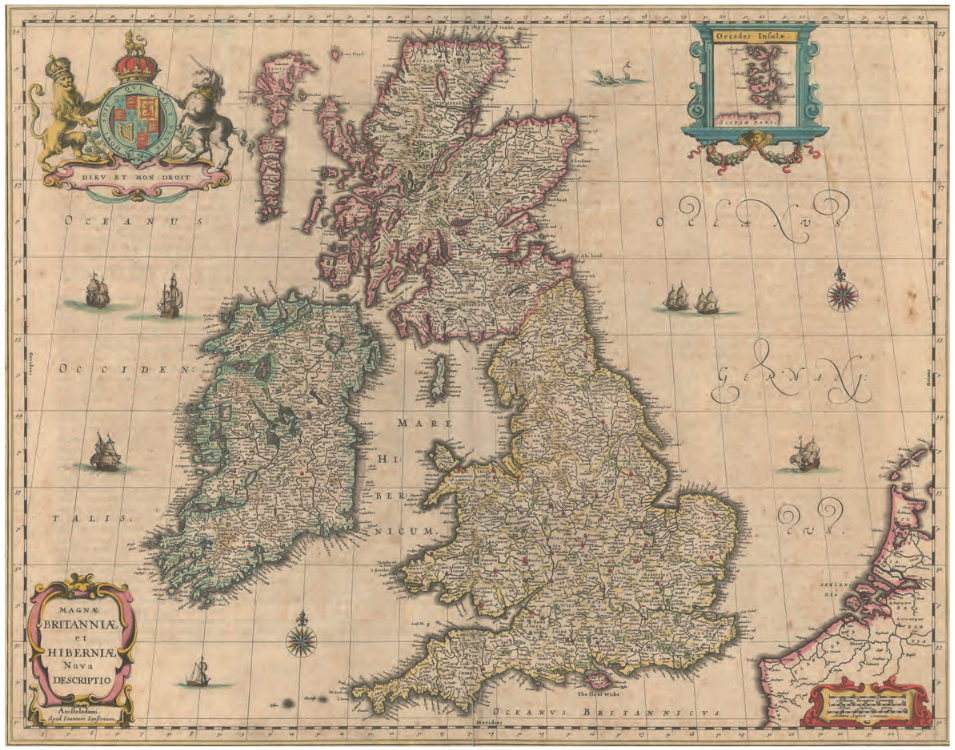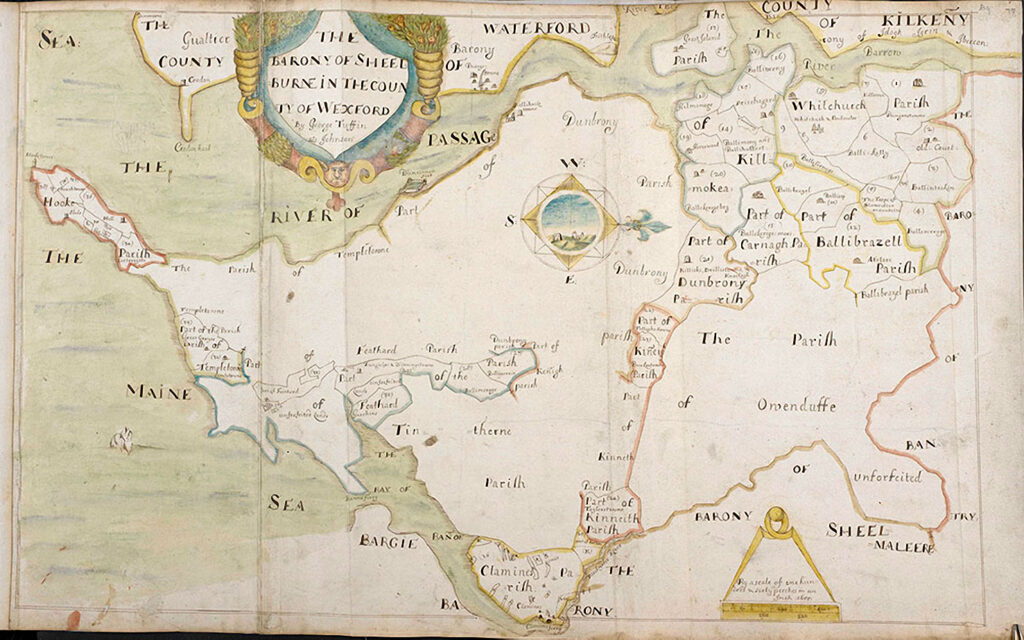By Eamon Darcy

In the 1660s, as the English empire expanded into the Atlantic world, interest in the newly discovered territories sparked greater investigations of the flora, fauna and history of English, Irish, Scottish and Welsh localities. Inspired by the famous English philosopher Francis Bacon, the Royal Society in London wanted to pursue a new approach to history. Rather than focus on the actions of the aristocracy and well-known political figures, scholars were encouraged to study the environment, the natural world and human nature—what became known as ‘Natural History’. One of the leading figures within the Royal Society, Robert Boyle, argued that in order to understand the past one had to investigate both the ‘ignoble productions of the earth’ and ‘the inhabitants themselves, both natives and strangers’. Therefore in 1678 members of the Royal Society in London, led by Robert Hooke, approached an English printer, Moses Pitt, with a view to publishing a multi-volume atlas of the world. This atlas would include textual descriptions of the regions depicted in the maps, adopting the Natural History approach.
PLAN FOR THE ATLAS
For his atlas, Pitt planned to reuse the plates from Dutchman Jan Jansson’s famous multi-volume Atlas Novus (1638–60). English audiences had already seen some of Jansson’s maps. In 1646 they had appeared alongside William Camden’s Latin history of the antiquities of England, Scotland and Ireland. Influenced by Hooke, Pitt envisioned an atlas that included accounts rooted in ‘Natural History’. Historical investigations were to be based on an extended set of queries from which scientific observations could be made. In the spirit of scholarly curiosity and co-operation that underpinned the work of the Royal Society, Pitt invited contributions from the public, asking ‘all Gentlemen, who have any particular Maps or Relations of new Discoveries, or any more perfect descriptions of places already known’ to send them to him. Although Pitt managed to produce some of his proposed volumes, in truth it was an overly ambitious project—one that would lead to Pitt’s financial ruin and imprisonment. Nevertheless, it led to the first systematic attempt to produce a county-level overview of Irish local history because Pitt wanted to produce a scholarly account of localities alongside their maps.

THE IRISH VOLUME OF PITT’S FAILED ATLAS
Part of Pitt’s plan for his atlas was to show regions not included by Jansson and/or to source new maps. Had he followed Jansson’s depiction of Ireland, it would have resembled John Speed’s 1612 map. Since the 1650s, however, Ireland had been comprehensively mapped by William Petty as part of the Down Survey. Although the chain of communication is unclear here, it appears that Narcissus Marsh, then provost of Trinity College, Dublin, believed that Petty’s maps could be used. In May 1682 Marsh recorded that he had begun to meet regularly with others to contribute to the Irish volume of Pitt’s atlas and that he hoped to obtain the use of 36 maps from William Petty to furnish Pitt’s Irish volume. At the same time, there were a considerable number of people in Dublin, many of whom were alumni of Trinity College, who wished to pursue similar scholarly investigations to those undertaken by the English Royal Society. Although an unintended consequence, Pitt’s failed atlas project led to the establishment of an Irish equivalent of the Royal Society. Several contributors to the atlas became founding members of the Dublin Philosophical Society. One man in particular, William Molyneux, emerged as a leading scholar and political figure in the following decade.
By the early 1680s, Molyneux was an exciting prospect emerging on the Dublin scene. He was part of the fourth generation of the Molyneux family in Ireland. His great-grandfather was born in the English Pale in Calais. After its capture by the French, he bought his freedom, eventually landing in Ireland, where he became a key figure within the Tudor regime. Strategic marriages wove the Molyneux family into prominent New English and Old English circles. Although William trained as a barrister in London, he had no need for a career thanks to his inherited wealth. In September 1678 he married Lucy Domville, daughter of the attorney general, William Domville. Shortly after their wedding, as they exited Christ Church Cathedral, Lucy suffered some form of fit and lost her sight. Distraught, Molyneux immersed himself in his father-in-law’s library, translating Descartes (published in April 1680) and researching ophthalmology in the desperate hope of finding a cure for his wife. These investigations, he later wrote, ‘were the opiates that lulled my troublesome thoughts to sleep’. Such need for distraction prompted Molyneux to offer his services sourcing information about Ireland to Pitt.
MOLYNEUX’S QUESTIONNAIRE

By the 1680s, ‘heads of enquiry’ or questionnaires had become a standard feature of imperial governance and scholarly activity across the English and Spanish empires. In the 1570s the questionnaire ‘became an essential instrument of government’ for Spanish colonists. Juan de Ovando, president of Spain’s Council of the Indies, began circulating questionnaires on climate, population and geography to gather information on the colonies, a practice he later brought back to Castile, where he served on the Council of Finance. Building on this, Francis Bacon encouraged scholars to gather information systematically and to gain knowledge through experience, observation and experimentation. It had become an established practice in the pursuit of natural history among those of a scholarly bent in seventeenth-century England, Ireland and Scotland. Numerous members of the Royal Society and many prominent unaffiliated local scholars sent out questionnaires to the wider public in order to gather information about the history and antiquities of regions across the Atlantic archipelago. Molyneux duly followed this tradition. In 1682 he devised a questionnaire asking for information on the Irish landscape, from lakes and rivers and woodlands to crops grown; the Irish past, from ancient ‘antiquity’ to more recent events such as the 1641 rebellion, the Confederate wars of the 1640s and the Cromwellian conquest of the 1650s; Irish demography; Irish urban settlements, including ‘ancient’ and ‘modern’ buildings, the names of prominent citizens and civic officials; and folklore about localities, including placename lore in English and Irish.
MOLYNEUX’S CORRESPONDENTS
It appears that Molyneux wanted to connect with as broad an audience as possible. The questionnaire was distributed for free ‘at the Shop of Mr. Dudley Davis Bookseller over against the Rose Tavern in Castle-street, Dublin’, not far from the Molyneux household. Despite these efforts, some of those who provided topographical descriptions for the atlas were members of Molyneux’s own networks. His brother-in-law, William Domville Jr, prepared the description of Laois, while his cousin, Nicholas Dowdall, provided an account of Longford. It is also likely that Molyneux’s brother-in-law, Anthony Dopping, who became Church of Ireland bishop of Meath in 1682, enlisted Sir Henry Piers to write a report on Westmeath. Piers’s response to Molyneux’s questionnaire paid homage to his family’s legacy in the area and hinted at various conflicts between native and newcomer. While describing Tristernagh Abbey, which was granted to his great-grandfather by Elizabeth I for his military service, Piers informs us that some of the dead from Cahir O’Doherty’s failed 1608 rebellion were buried in shallow graves in the church grounds, rendering gardening difficult: ‘the slain to a great but uncertain number were buried on the spot, as daily experience shews us, when occasion is given of digging in our gardens anything more than ordinary deep’. Curiously, two noted Irish scholars responded to Molyneux’s questionnaire—Roderick O’Flaherty and Tadhg O’Roddy. O’Flaherty had studied under John Lynch in Galway and was well versed in the Irish learned traditions and the latest trends in European scholarship. Despite the failure to print the Irish volume of Pitt’s atlas, O’Flaherty’s account of Galway survived and was later printed by James Hardiman. Intriguingly, O’Flaherty claimed that a crocodile resided in Lough Mask: ‘Old men acquainted with the lake’, he wrote, ‘do tell there is such a beast in it’.
One of the more interesting accounts, describing the barony of Forth, Co. Wexford, provides a fascinating insight into local Wexford identities. The anonymous correspondent (likely a Catholic priest of Sinnot descent) claimed that most of the inhabitants of Forth were direct descendants of the original English invaders of Ireland in the twelfth century and lived on the same plots of land until ‘the Cromwellian usurpation’ in the 1650s. Out of pride in their origin, Forth locals still wore the same style of clothes as their ancestors and could still speak ‘old Saxon English’. The turmoil of the sixteenth and seventeenth centuries is evident in Sinnot’s writings too. As someone from the ‘Old English’ community, he emphasised the pious devotion of his fellow Catholics in Wexford and their loyalty to the English monarchy. He claimed that in 1649, after the execution of Charles I by the English parliament, a local lake turned the colour of blood. Furthermore, he recounted, somewhat bitterly, the devastation caused by Cromwellian soldiers in destroying churches and religious artefacts in private houses. ‘There were many crosses in publick Roads and crucifixes in private houses and churches in the said Barony kept builded of stone, timber or metal, representing the dolorous passion of our saviour Jesus Christ, which wherever found were totally defaced, broken, or burned by Cromwellian soldiers.’ The trauma of the 1650s could still be felt in the 1680s.
In all, 32 responses to Molyneux’s questionnaire survive, covering twenty counties and seven towns/baronies, among the papers of the Dublin Philosophical Society. Sadly, Molyneux’s own notes do not survive. He later confessed that he burnt them, presumably in a fit of frustration after Pitt had to pull the plug on the project. Yet, despite the atlas’s failure to appear, this tentative foray into its content has shown how Molyneux’s respondents offered rich insights into local Irish history and folklore. It should not be forgotten that Pitt, Marsh and Molyneux were among the first to attempt a nationwide, county-level (and cross-community) investigation of Irish history—a key moment in the development of historical investigations in Ireland.
NOW AVAILABLE FREE ONLINE
Some of these county descriptions have already been published in various places. An exciting new project has now made all these descriptions (and some of the volumes of the Dublin Philosophical Society) available online for free for members of the general public. Last year (2024) I secured funding from the Royal Irish Academy’s Nolan Digitisation Fund to publish original images and a machine transcription of Molyneux’s papers. This project facilitated a partnership between the Arts Humanities Institute, Maynooth University, the Library of Trinity College, Dublin, and the Virtual Record Treasury of Ireland. Now these papers are accessible at https://virtualtreasury.ie/curated-collections/molyneux-papers. Happy hunting!
Eamon Darcy lectures in history at Maynooth University.
Further reading
K.T. Hoppen, The common scientist in the seventeenth century: a study of the Dublin Philosophical Society, 1683–1708 (Abingdon, 1970).
J.G. Simms, William Molyneux of Dublin, 1656–1698 (ed. P.H. Kelly) (Newbridge, 1982).
